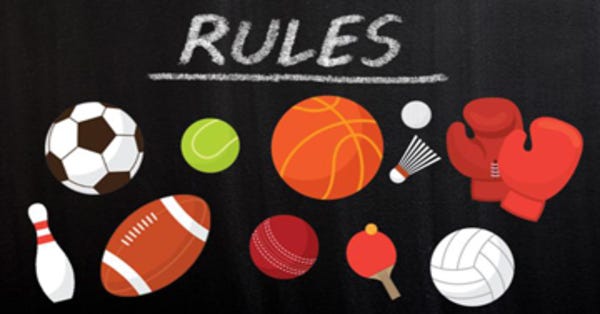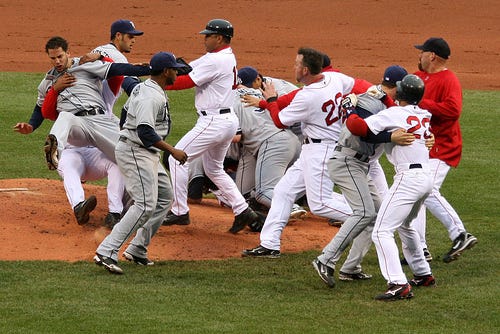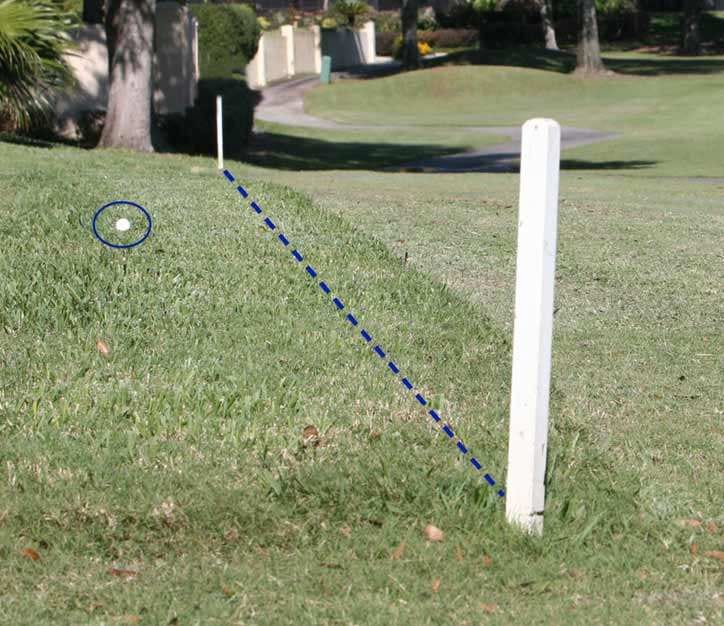Sports and Rules
You know when things just blend together seamlessly when you weren’t even trying to bring them together? That’s a signal your aim is true and close to the mark.
This happened to me this week.
I’ve been going back over the Tribal Training Cafe podcasts myself and team leader Ryan Dreyer have recorded over the past 6 months in addition to reading sport philosophy as research for the big book I’m planning to write on my athletic philosophy.
Both converged on the idea of rules and boundaries.
I listened to one of my fave cafe pods we recorded specifically on ‘Boundaries’ at the same time I hit the part of the book that argued that sports can be understood as a ‘list of rules.’
Leaning into that synchronicity I want to explore a little bit of the importance of rules and boundaries in creating the conditions for play, freedom, and ultimately personal transcendence through sport.
Boundaries and Freedom
Here’s that episode of the Tribal Training podcast on boundaries, take a listen.
One thing that sticks out is how rules create to space to play.
Think of a game, any game. The rules create the conditions for fun to emerge through play. A classic example I used in my old sport philosophy lectures as prof was the board game Monopoly. The game is fun because we submit to the rules, we roll the dice and move our pieces around the board, buy and sell properties based on their values, and even create conditions outside of the normal rules that allow players to trade and make deals. But if one person decides to break those rules, the game isn’t fun anymore.
The same is true in sports. Without the rules, there’s chaos. It’s the difference between the precision and execution of a professional MMA fight and the madness you see during a bench clearing ‘brawl’ in baseball. One has rules, thus order and flow, while the other has no boundary, pure chaos.
The lesson is clear, the right rules and boundaries on our actions create the conditions for play and flourishing.
This isn’t just true in the sports realm, but in how we order our day to day lives.
Practical use of boundaries
A lot of members of our Tribal Training team and the people I coach 1 on 1 struggle implementing the right types of boundaries in their life. They lack time, lack energy, lack order. They demand better of themselves but can’t seem to find the right structure to allow them to flourish.
They don’t have the right boundaries in place to set them on a path towards flourishing.
And here’s one more powerful thing to realize about the rules. If they aren’t seen as appropriate, or worse seen as arbitrary, you’ll rebel against them. It’s the same as the teacher or coach who can’t command respect from the students or athletes they lead. So not only do they not have the right rules in place for them, the wrong rules give them ‘permission’ to rebel because they’re seen as limiting without justification.
Here’s a common example I see when it comes to work/life balance. A lot of us now work from home when we didn’t before, thanks ‘pandemic.’ But that creates a host of problems around boundaries.
Do you work from the same place you eat your family meals?
Do you have a physical space separate from the chaos and stress of the house?
Are you able to separate the activities?
This usually results in the following: bringing all the negative work stress into the home environment
I advise people in this situation to think about these boundaries
Create a physical boundary between work and home, if that means leaving the home during work time then do it (coffee shops are overrated, try a library instead)
Create a buffer zone before and after work time, 5 minutes to enter into work and 5 minutes to exit it. If you used to commute to work, you had this time without even realizing it’s gone in a ‘work from home’ context
Train and exercise early in the morning to create positive momentum coming into the day so you’ll better abide by your boundaries
When it comes to finding motivation to train and exercise, boundaries are just as important here. When people lose their drive and motivation, leading to a slip in their training consistency, it again shows a lack of boundaries. There’s no ‘set time’ designated for that work, and that flexibility ultimately becomes chaos because you can ‘put it off’ until you ‘can’t do it’ anymore.
My advice to fight against this is to create boundaries that make exercise a sacred space to charge up, recharge, meditate, unwind, or whatever space you need to let the stresses of the ‘normal’ world fade into oblivion (at least while you’re exercising).
Create a ritual, similar to the space boundaries around work/life balance, that help you enter into a zone apart from the ordinary. Training now becomes a sanctuary. Some ideas to help you get started.
Try some breathwork exercises to prime the body, mind, and spirit together
Play a song that fires up your intensity and makes you want to smash through walls
Put on that ‘lucky’ piece of clothing that helps transport you into the ‘zone’
Conceptual use of boundaries
Those are great practical ideas on using boundaries but they rely on deep concepts to give them the real power in affecting your day to day life.
The first is the idea of ‘Sacred Time and Space’ that comes from Comparative Religion scholar Mircea Eliade.
All world religions separate the ‘profane’ or ordinary world from the ‘sacred’ the timeless and eternal world of the gods and spirits. And we ritualize and create a physical boundary between the two. In Judaism, for example, there is a foyer that separates the sanctuary for prayer from the outside world. There is a physical break between the worlds. Furthermore, before entering the sanctuary I need to wrap myself in a prayer shawl (tallit), adorn my head with a covering (yarmulke), and say the necessary prayers, to prepare myself to enter.
The above practical advice on creating boundaries reflects that understanding of different zones of reality, and how we can create different planes of experience through setting up the right boundaries.
But its even deeper than that.
Without the rules we cannot have the freedom to move towards the best version of ourselves. Let me repeat that. Without rules, it’s impossible to have freedom.
How does that make any sense? Isn’t freedom the absence of rules? NO!
Freedom is the other side of the responsibility coin. It’s only possible when submitted to the proper obligations and thus boundaries.
If I have no bounds on my action, I’m unable to realize any action at all.
Let’s use that game idea to get a better handle on this abstract understanding. All sports have an ‘in bounds’ and ‘out of bounds.’ All sports have a clock or timing mechanism to determine the start and end of the game. All sports have rules about what you can and can’t do in order to win the game, or even indeed, to play the game at all.
If I try to play a game of soccer, but there aren’t any lines on the field, and some players decide to handle the ball instead of kicking it, we no longer play soccer.
But if we all agree and submit to the rules of the game, then we become FREE inside the lines to explore, create, imagine, and experience. Submission to form gives us freedom to act.
It’s the same thing that let’s us create music on instruments that are expertly crafted along dimensions that allow the player to create beautiful sounds and rhythms. No scales, no tempo, no harmonies, no music.
But it’s the RIGHT rules and bounds that create the potential for freedom and thus beauty and truth to emerge.
Your turn to apply
I hope all this talk about boundaries and rules has got you thinking about ways you’ve been setting the wrong boundaries and how you can adjust the rules to begin setting yourself up for success.
I want you to think of 1 place in your day to day where implementing a hard boundary will help create space and freedom. It could be buffer zone. It could be physical boundaries. It could be that alarm clock you hit snooze on becoming a non-negotiable. Instead of thinking “how does this rule limit me?” think instead about “what does implementing this rule free me up to accomplish?”
Next think deeply about the conceptual use of rules and their relationship to freedom. Are there places you rebel against yourself because you set the rules incorrectly or arbitrarily? Have you been setting up a prison instead of a game where you can find freedom? What would embracing boundaries and rules and necessary for your growth do to your mindset around disciple and achievement? I think you’ll find that what you thought were limits are actually opportunities and the rules you’ve been setting for yourself are truly the limits.
As always, if you have some deeper or personal questions related to these ideas and actions, or want to explore how I help teammates and clients use rules and boundaries, use the button below and send me a direct message. I’m not just here to present the ideas but also to help you implement them in direct action to improve your life in body, mind, and spirit. That’s how we all win together!




